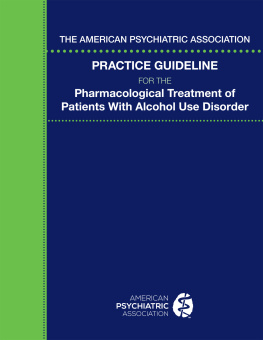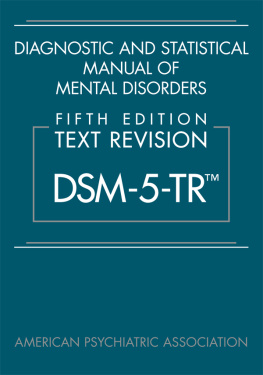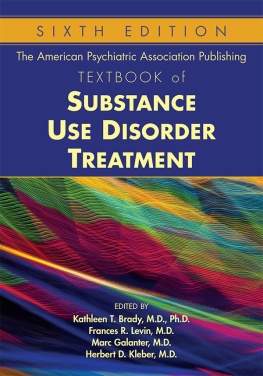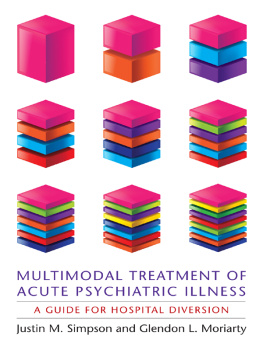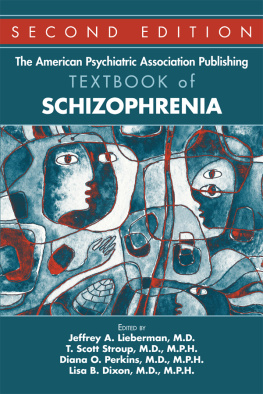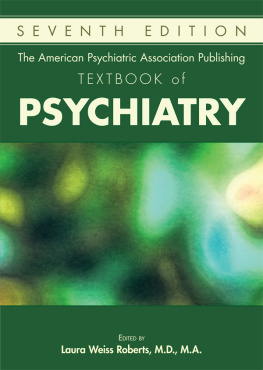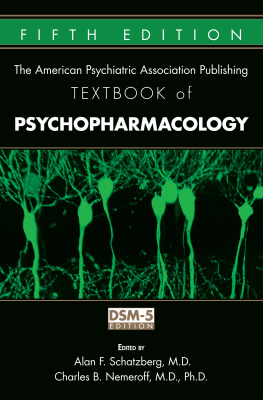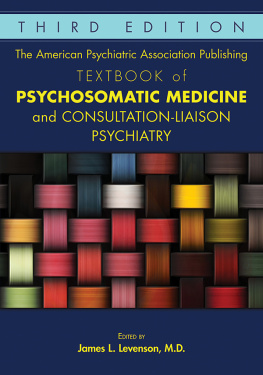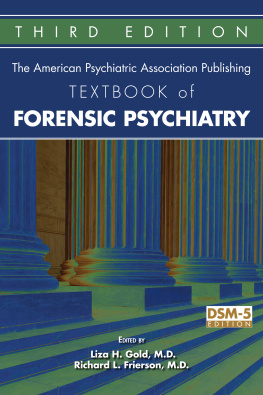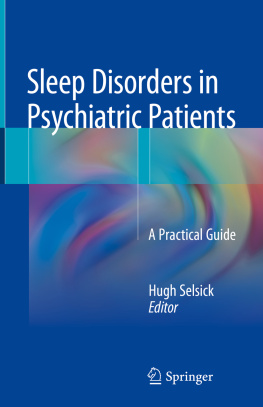Page list

THE AMERICAN PSYCHIATRIC ASSOCIATION
PRACTICE GUIDELINE FOR THE
Pharmacological Treatment of
Patients With Alcohol Use Disorder
Guideline Writing Group
Victor I. Reus, M.D., Chair
Laura J. Fochtmann, M.D., M.B.I., Vice-Chair, Methodologist
Oscar Bukstein, M.D., M.P.H.
A. Evan Eyler, M.D., M.P.H.
Donald M. Hilty, M.D.
Marcela Horvitz-Lennon, M.D., M.P.H.
Jane Mahoney, Ph.D., R.N., PMHCNS-BC
Jagoda Pasic, M.D., Ph.D.
Michael Weaver, M.D.
Cheryl D. Wills, M.D.
Jack McIntyre, M.D., Consultant
Systematic Review Group
Laura J. Fochtmann, M.D., M.B.I., Methodologist
Joel Yager, M.D.
Seung-Hee Hong
Steering Committee on Practice Guidelines
Michael J. Vergare, M.D., Chair
Daniel J. Anzia, M.D., Vice-Chair
Thomas J. Craig, M.D.
Deborah Cowley, M.D.
Laura J. Fochtmann, M.D., M.B.I., Consultant, Methodologist
David A. Kahn, M.D.
John M. Oldham, M.D.
Carlos N. Pato, M.D., Ph.D.
Joel Yager, M.D., Consultant
APA Assembly Liaisons
John P. D. Shemo, M.D., Chair of Area Liaisons
John M. de Figueiredo, M.D.
Marvin Koss, M.D.
Annette L. Hanson, M.D.
Bhasker Dave, M.D.
Robert M. McCarron, D.O.
Jason W. Hunziker, M.D.
APA wishes to acknowledge the contributions of APA staff (Jennifer Medicus, Seung-Hee Hong, Samantha Shugarman, Michelle Dirst, Kristin Kroeger Ptakowski). APA and the Guideline Writing Group especially thank Laura J. Fochtmann, M.D., M.B.I.; Jeremy Kidd, M.D.; Seung-Hee Hong; and Jennifer Medicus for their outstanding work and effort in developing this guideline. APA also thanks the APA Steering Committee on Practice Guidelines (Michael Vergare, M.D., Chair), liaisons from the APA Assembly for their input and assistance, and APA Councils and others for providing feedback during the comment period.
Contents
Acronyms/Abbreviations
AA Alcoholics Anonymous
ACCME Accreditation Council for Continuing Medical Education
AHRQ Agency for Healthcare Research and Quality
ALT Alanine aminotransferase
APA American Psychiatric Association
ASAM American Society of Addiction Medicine
AST Aspartate aminotransferase
AUD Alcohol use disorder
AUDIT Alcohol Use Disorders Identification Test
AUDIT-C Alcohol Use Disorders Identification TestConcise
CAGE Cut down, Annoyed, Guilty, Eye-opener
CBI Combined behavioral intervention
CBT Cognitive-behavioral therapy
CDT Carbohydrate-deficient transferrin
CI Confidence interval
COMBINE Combined Pharmacotherapies and Behavioral Interventions for Alcohol Dependence
CRAFFT Car, Relax, Alone, Forget, Friends, Trouble
CrCl Creatinine clearance
DSM-III-R Diagnostic and Statistical Manual of Mental Disorders , 3rd Edition, Revised
DSM-IV Diagnostic and Statistical Manual of Mental Disorders , 4th Edition
DSM-IV-TR Diagnostic and Statistical Manual of Mental Disorders , 4th Edition, Text Revision
DSM-5 Diagnostic and Statistical Manual of Mental Disorders , 5th Edition
eGF Estimated glomerular filtration rate
FDA U.S. Food and Drug Administration
GGT Gamma-glutamyl transferase
GRADE Grading of Recommendations Assessment, Development and Evaluation
GWG Guideline Writing Group
HIV Human immunodeficiency virus
ICD-10 International Classification of Diseases , 10th Revision
IM Intramuscular
IRR Incidence rate ratio
MBSCT Modified behavioral self-control therapy
MCV Mean corpuscular volume
MDD Major depressive disorder
MET Motivational enhancement therapy
MI Motivational interviewing
MM Medical management
NIAAA National Institute on Alcohol Abuse and Alcoholism
NIMH National Institute of Mental Health
NNT Number needed to treat
NQF National Quality Forum
OPRM1 Genotype Opioid receptor 1 genotype
OR Odds ratio
OTC Over-The-Counter
PCM Primary Care Management
PEth Phosphatidylethanol
Project MATCH Matching Alcoholism Treatments to Client Heterogeneity
PTSD Posttraumatic stress disorder
QTc Corrected QT interval
RCT Randomized controlled trial
RD Risk difference
SNP Single nucleotide polymorphism
SRG Systematic Review Group
TSF Twelve-step facilitation
USPSTF U.S. Preventive Services Task Force
WMD Weighted mean difference
Introduction
Overview of the Development Process
Since the publication of the Institute of Medicine (now known as National Academy of Medicine) report, Clinical Practice Guidelines We Can Trust (.
Rating the Strength of Research Evidence and Recommendations
Development of guideline statements entails weighing the potential benefits and harms of the statement and then identifying the level of confidence in that determination. This concept of balancing benefits and harms to determine guideline recommendations and strength of recommendations is a hallmark of GRADE (Grading of Recommendations Assessment, Development and Evaluation), which is used by multiple professional organizations around the world to develop practice guideline recommendations ().
In weighing the balance of benefits and harms for each statement in this guideline, our level of confidence is informed by available evidence, which includes evidence from clinical trials as well as expert opinion and patient values and preferences. Evidence for the benefit of a particular intervention within a specific clinical context is identified through systematic review and is then balanced against the evidence for harms. In this regard, harms are broadly defined and may include serious adverse events, less serious adverse events that affect tolerability, minor adverse events, negative effects of the intervention on quality of life, barriers and inconveniences associated with treatment, direct and indirect costs of the intervention (including opportunity costs), and other negative aspects of the treatment that may influence decision making by the patient, the clinician, or both.
Many topics covered in this guideline have relied on forms of evidence such as consensus opinions of experienced clinicians or indirect findings from observational studies rather than research from randomized trials. It is well recognized that there are guideline topics and clinical circumstances for which high-quality evidence from clinical trials is not possible or is unethical to obtain (). For each guideline statement, we have described the type and strength of the available evidence as well as the factors, including patient preferences, that were used in determining the balance of benefits and harms.
The authors of the guideline determined each final rating, as described in the section Guideline Development Process, and is endorsed by the APA Board of Trustees. A recommendation (denoted by the numeral 1 after the guideline statement) indicates confidence that the benefits of the intervention clearly outweigh harms. A suggestion (denoted by the numeral 2 after the guideline statement) indicates greater uncertainty. Although the benefits of the statement are still viewed as outweighing the harms, the balance of benefits and harms is more difficult to judge, or either the benefits or the harms may be less clear. With a suggestion, patient values and preferences may be more variable, and this can influence the clinical decision that is ultimately made. Each guideline statement also has an associated rating for the strength of supporting research evidence . Three ratings are used: high , moderate , and low (denoted by the letters A, B, and C, respectively) and reflect the level of confidence that the evidence for a guideline statement reflects a true effect based on consistency of findings across studies, directness of the effect on a specific health outcome, precision of the estimate of effect, and risk of bias in available studies ().

